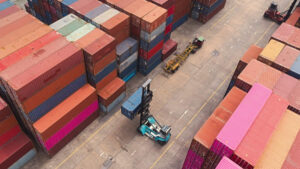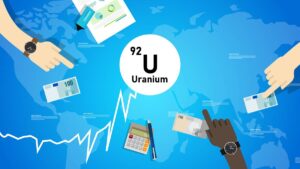A new US law has given a major boost to rare earths miners such as Arafura

Pic: Bloomberg Creative / Bloomberg Creative Photos via Getty Images
Special Report: The US has banned the purchase of rare earth magnets from a range of countries — and that’s set to benefit rare earths miners outside China.
A little-known part of the John S. McCain National Defense Authorisation Act passed in August prevents the US military from buying rare earth magnets from countries including China, Russia, North Korea and Iran.
The law was named after the highly-respected Arizona Senator who passed away last week.
The US Government wants to end a strategic vulnerability of relying on foreign states for critical minerals.
The problem is that China accounts for around 85 per cent of rare earths mined globally and produces 90 per cent of rare earth magnets – in 2016 the US imported 91 per cent of its rare earth magnets from China.
The magnets are used in the automotive, renewable energy, aerospace, robotics, telecommunications and healthcare industries, as well as in the traction motors of hybrid and electric vehicles (EV).
The US is trying to secure the supply of strategic materials and has named 35 minerals, including rare earths, cobalt, lithium, vanadium and uranium, as “critical to the economic and national security of the US” and vulnerable to disruption in supply, according to the USGS.
The law specifically targets NdFeB (neodymium iron boron) and SmCo (samarium cobalt) rare earth magnets.
Neodymium and praseodymium (NdPr) are the key rare earths used in the production of ultra-strong NdFeB permanent magnets.
The squeeze is on
Australian rare earths developer Arafura Resources (ASX:ARU) says heavy investment by China in NdPr processing and magnet technology and manufacturing over the decades has led to limited non-Chinese capacity.
Arafura Managing Director Gavin Lockyer says China has driven the global search for lithium in order to feed its lithium-ion battery hunger – it 2017 it produced just 3000 tonnes of the stuff yet consumed about half of global supply.
China’s aggressive moves to secure battery metals supply has now forced Japanese, Korean and European EV manufacturers to similarly act to secure their supply requirements.
But the fact that China already had plentiful NdPr raw materials for magnets may have lulled Western EV companies into a false sense of security.
>> Find out more about Arafura Resources
The new US defence act provides a wakeup call of sorts.
The US Department of Defense is now desperately seeking approved magnet supply as only 10 per cent of global supply comes from outside China.
“The shortfall in sanctioned magnet production has the potential to support elevated NdPr prices as global supply struggles to satisfy demand and the deficit widens,” Mr Lockyer says.
The US first became aware of its military dependence on rare earths from China in 2010, when that country put a temporary embargo on exports.
Already car makers like Tesla are in the firing line: it has just declared it will be using NdFeB magnets in its Model 3 cars for improved efficiency and performance.
Arafura set to benefit
But Arafura and many others also believe China is set to become an importer of NdPr by the early 2020s.
My Lockyer told Stockhead that China’s major magnet makers are rapidly expanding production at the same time as Chinese regulators are closing down unsustainable NdPr mining and processing operations.
The country has already started importing NdPr from the Malaysian operations of Australia’s Lynas Corp.
NdPr is the main rare earth product Arafura plans to produce from its Nolans project in the Northern Territory, which is capable of meeting 5 to 10 per cent of global demand.
https://www.youtube.com/watch?v=JlBvaOnu27I
The US is already a sizeable established market for Arafura’s future sales of lanthanum (La) which is used as a refining catalyst in the petroleum industry. Should the US act to re-establish supply chains to make rare earth magnets, its need for NdPr will intensify.
NdPr is on the EV list
Demand for NdPr is expected to grow at 8 per cent each year to 2025 from the current global consumption of 33,340 tonnes.
Prices have been rising since mid-2016 as China began consolidating its industry but longer term they’re expected to keep ticking up on demand from EVs, clean energy applications, and in industrial automation.
While traditional petrol or diesel combustion engine motor vehicles each use about 700 grams of NdPr, electric or hybrid vehicles require an extra kilo.
NdPr is also a key component of the large permanent magnets used in wind turbine generators.
Arafura Resources is a Stockhead advertiser.
This advice has been prepared without taking into account your objectives, financial situation or needs. You should, therefore, consider the appropriateness of the advice, in light of your own objectives, financial situation or needs, before acting on the advice. If this advice relates to the acquisition, or possible acquisition, of a particular financial product, the recipient should obtain a disclosure document, a Product Disclosure Statement or an offer document (PDS) relating to the product and consider the PDS before making any decision about whether to acquire the product.
UNLOCK INSIGHTS
Discover the untold stories of emerging ASX stocks.
Daily news and expert analysis, it's free to subscribe.
By proceeding, you confirm you understand that we handle personal information in accordance with our Privacy Policy.








